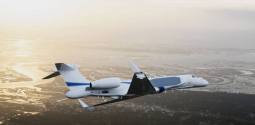Well, the theory is sound. F-35 is still more survivable than a B-52.
you don't need bomber level (20000+ kg) payload. a striker level payload (~8000 kg) is enough. 4-5 cruise missiles or a rack of 20x bombs is more than enough to be scary to critical targets.
UCAV have poor situational awareness and aren't radio silent. missiles also do not have good real time situational awareness.
Carrying a 8 ton payload internally within a supersonic capable stealth bomber with an effective combat radius (lets say 2000 kilometers), will result in a very, very large aircraft. It would probably have to be 80t MTOW (perhaps 60+t for a stealth loadout)-- smaller than the 126t of Tu-22M3, but much larger than the 45t of F-111, and over twice the MTOW of something like J-20.
I suppose what I'm saying is that carrying "only" a striker level payload for any sort of useful combat radius for a theater capable bomber/striker, will still require a pretty massive honking aircraft, because those 8t of payload must be carried
internally. That's the nature of stealth aircraft.
Add on to the fact that such a large aircraft is intended to be supersonic capable.... and it will indeed be quite expensive.
The idea of a supersonic capable stealth bomber (the notional JH-XX) has to be weighed up against the H-20, the latter of which (for many years) has been accepted to be a much larger aircraft with longer range and payload than the JH-XX would have been (by virtue of being a bigger aircraft as well as a flying wing).
As far as prioritization of resources go, it is not about "JH-XX versus alternative non stealthy bomber (such as H-6K or something)" -- and more about "JH-XX versus H-20".
IMO, H-20 is much higher of a priority than JH-XX would be, simply because in terms of payload and range, JH-XX cannot carry what H-20 can carry and it cannot carry it as far as H-20, at the sacrifice of course at being slower to ingress and egress out of a battlespace as quickly as a notional JH-XX.
However, this discussion is all academic -- as of now in 2022, the H-20 is an aircraft that is expected to emerge in the next year or so, and is an aircraft whose existence has been long confirmed, meaning the PLA has already committed to it. Meanwhile, we've had some rumours of JH-XX on and off, but no consistent, clear rumours regarding any sort of commitment to JH-XX.
====
In terms of the numbers for JH-XX, as far as weight and payload distribution goes, I remember we discussed this a few years ago, and I wrote this at the time -- I think the estimates I made at the time mostly still apply right now.
I get that, but I think we can already surmise what the balance of trade offs are. If I recall, you started this conversation with the assertion of an 80 ton plane. I think even 40 tons would be pushing it with WS-10 class engines, and at 40 tons I don't think your payload would be significantly...
www.sinodefenceforum.com

